Universal putty: features of choice
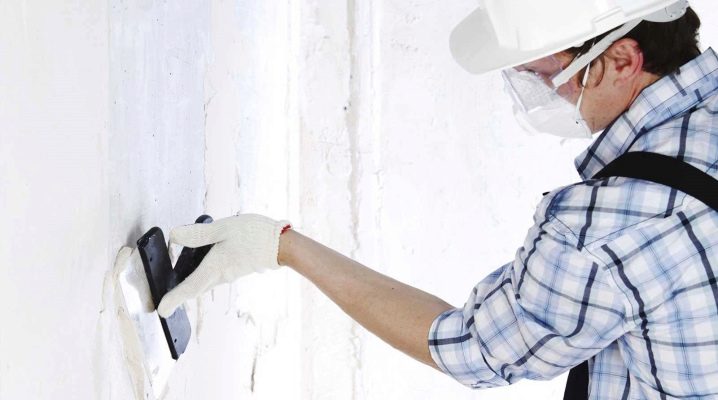
Putty is one of the stages of high-quality finishing of walls and ceilings. Such mixtures have predominantly positive reviews, the instructions will help to make it knead correctly. We find out the features of the choice.
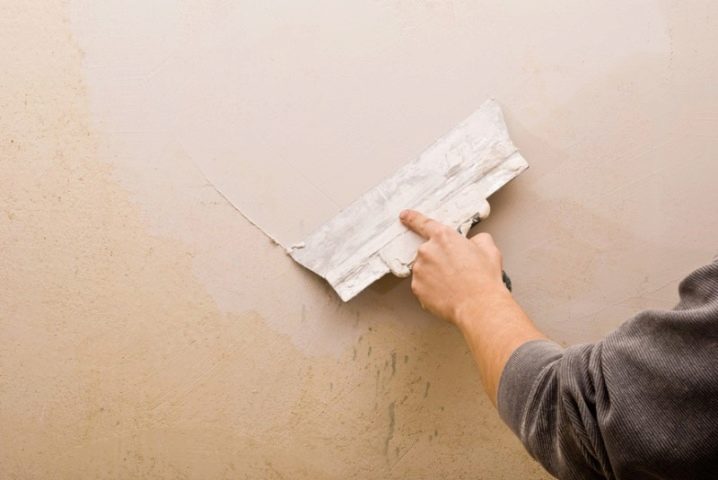
Criterias of choice
In order to choose the right universal putty suitable for specific needs, it is worth considering a number of basic factors.
It is important to find out:
- internal or external walls of the building are finished with it;
- the type of surface to which the mixture should be applied;
- resistance to aggressive influences on the finished surface (humidity, temperature drop, mechanical damage);
- the qualities that the finishing surface should have (smoothness, plasticity, strength, color);
- whether further finishing work will be carried out or the putty will be the face of the wall.
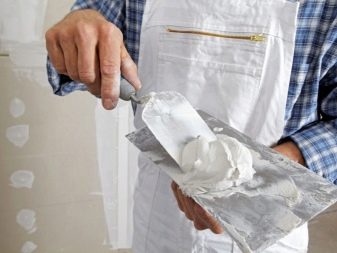

For some finishing materials, there are optimal types of fillers. If this material is the front surface, special attention should be paid to color. The timing in which the work will be carried out matters. Dry putties are stored for a long time, ready-made without special additives have a strictly limited shelf life. Finishing budget is one of the main factors.
To understand which universal putty is best suited, you need to pay attention to the requirements for starting and finishing putty, which are replaced by a universal look.
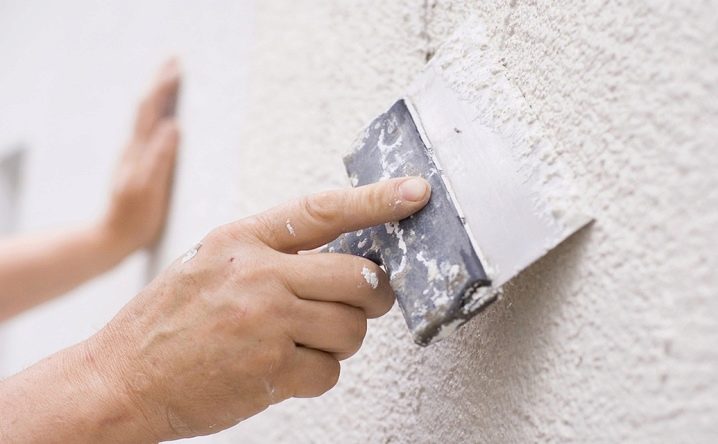
The starting putty should:
- it is good to level even significant wall irregularities up to 10 mm or more;
- be plastic, otherwise cracks form after drying;
- have good adhesion: stick to the surface material at the molecular level, otherwise peeling from the surface is possible;
- be durable.
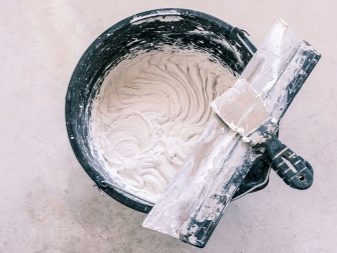
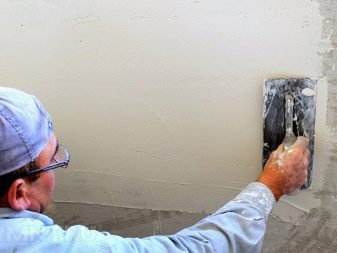
The basic requirements for the finishing putty are as follows:
- the surface must be flat and smooth;
- it should give in to grinding;
- the material should have an aesthetic appearance (if the putty will be the face of the wall without further finishing), especially with regard to color.
The special point is strength. Strong universal putty with good resistance to mechanical stress. It is advisable to use it in gyms, children's rooms, entertainment establishments, entertainment centers and places of active human activity. It is more difficult to grind, which complicates further finishing work.
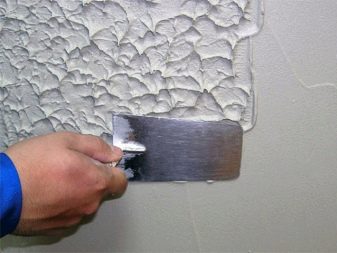

Another subtlety is the choice of finishing materials of the same brand. For example, a primer and putty from the same manufacturer were developed and tested for step-by-step co-application. The interaction of such materials with each other will be guaranteed of high quality.
Additional specific criteria may be put forward:
- moisture resistance;
- resistance to temperature;
- environmental friendliness of the composition;
- biological inertness;
- fire safety;
- acid resistance.
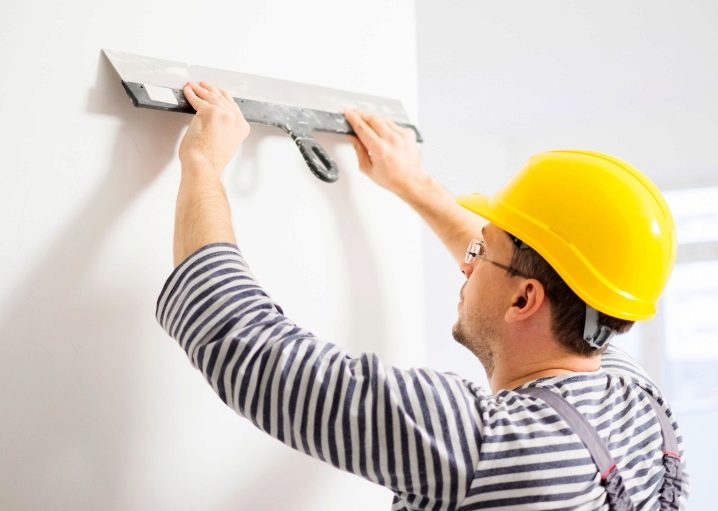
Advantages and disadvantages
Separate pluses of the universal putty include:
- ease of finishing work in comparison with multi-layer application of two-type finishing;
- saving time for work, taking into account the drying time of each layer when finishing with starting and finishing putty.
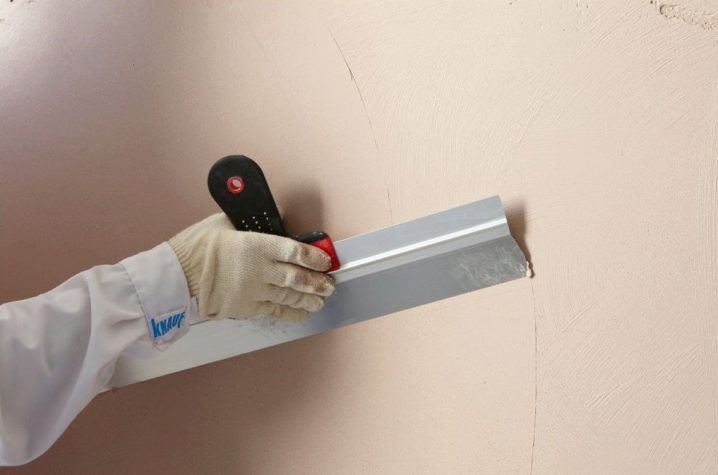
This material also has disadvantages:
- the quality of the final surface obtained (subject to the same level of finishing work skills) is slightly lower for the universal putty;
- it is more difficult to choose a brand of putty, the quality of which will satisfy all the urgent needs.

Views
When ready, universal mixes are divided into two types: dry and ready-made.
- Dry. To use them, you need honed finishing skills in order to dilute the mixture with high quality. Otherwise, the resulting surface will be far from the desired result. The shelf life of such fillers is long. From a financial point of view, they are cheaper. Well suited for creating a base on which wallpaper is glued, hiding an imperfect surface.
- Ready. These varieties can be used immediately by opening the lid of the bucket. They are easy to use, convenient for those who want to finish with their own hands in the absence of specialized skills. The resulting surface is always flat and smooth. Such mixtures are often chosen for painting the walls. The price of these putties is higher than that of dry ones.
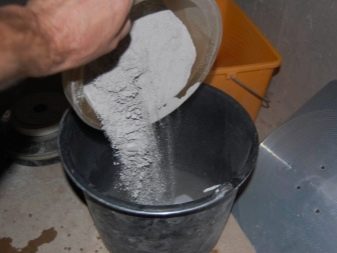
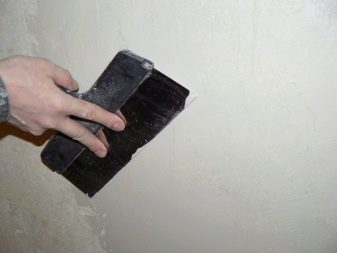
According to their composition, universal putties are divided into the following types:
- cement;
- gypsum;
- polymer;
- water-dispersive;
- oil and glue.
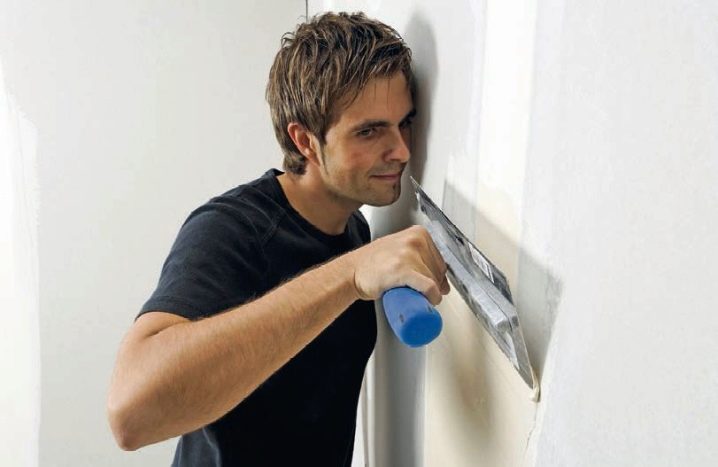
Cement
A universal mixture that uses cement as a binder has become widespread due to its low price. It is often used in the finishing work of large areas (repairs of communal institutions, schools, kindergartens, finishing the entrances of multi-apartment high-rise buildings and other objects).
It has its own characteristics:
- To obtain a good solution, there are certain requirements: you need a special coarse sand (1.5-2.5 mm), otherwise cracks will appear on the dried layer (the solution must be mixed with water at a temperature of up to 20 degrees).
- The solidification rate of the finished solution is in the range from 5 to 24 hours, depending on the specific composition.
- The applied layer shrinks a lot, so that reapplication is part of the technological process.
- Due to the inelasticity of the cement mixture, the chance of cracking, even if the technical process is followed, is very high.
- The resulting surface is grainy and rough to the touch.
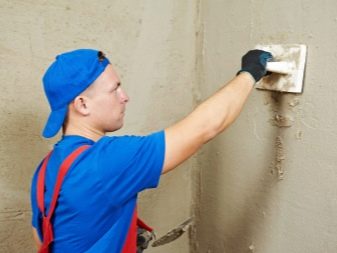
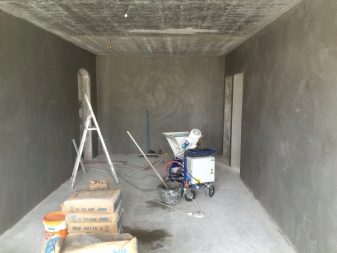
Such material:
- effectively evens out even large (more than 10 mm) surface flaws;
- not suitable for putty on wooden surfaces;
- easily tolerates high humidity;
- frost-resistant;
- highly durable;
- difficult to grind.
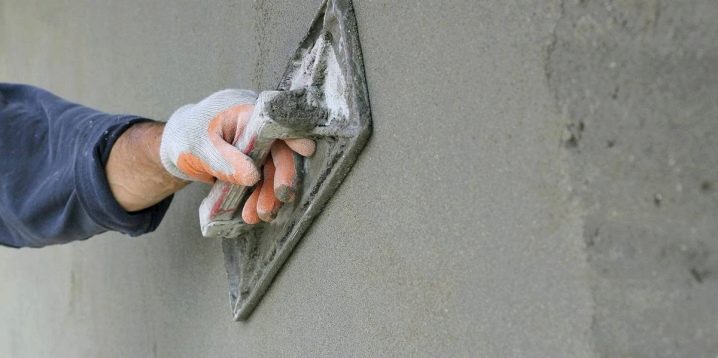
The original mixture, when solidified, acquires an unaesthetic yellowish-gray color; there are brands with additives, through which the color of the material becomes white and super-white. This factor key determines the price of the cement mixture (it ranges from 120 to 330 rubles per 10 kg).
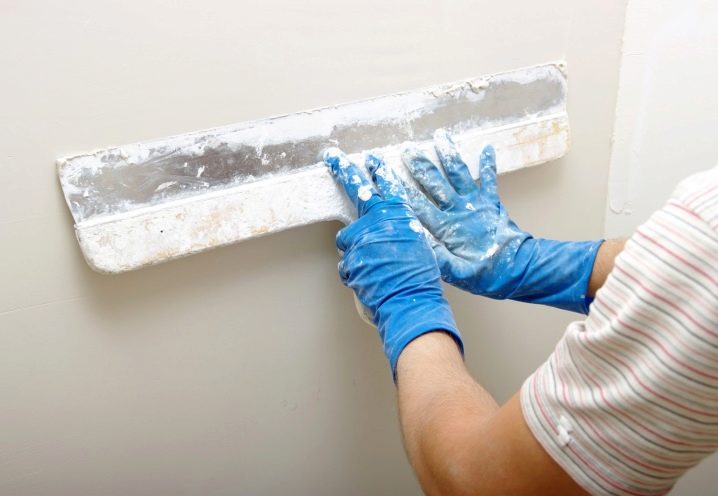
Gypsum
This versatile mixture is often used for finishing cement and plasterboard surfaces. Its low price and ease of use have made it popular among people with no experience in decorating.
Gypsum putty is characterized by:
- ease of mixing dry mixture;
- good application to the surface to be leveled;
- short drying time of the applied layer;
- lack of an unpleasant pungent odor;
- no shrinkage (therefore, it is not covered with cracks);
- even and smooth surface after finishing;
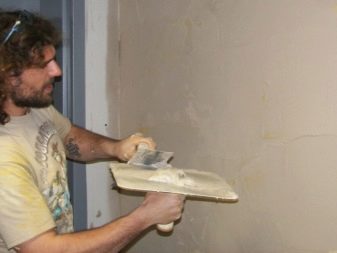
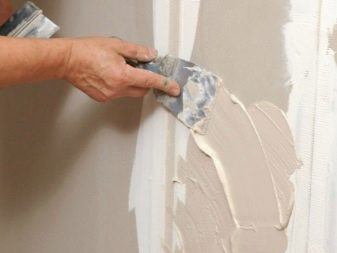
- pliability to grinding;
- fire safety;
- natural composition.
It is an excellent base for further coloring, does not emit toxic substances, does not provoke allergies. Low moisture resistance makes it unsuitable for use in bathrooms and kitchens where humidity and temperature fluctuations are a constant phenomenon. Such a putty enhances the insulating properties of the wall. It can be stored for a long time without loss of quality.
It is characterized by low strength: it resists vibration and mechanical stress poorly, and is not suitable for decorating children's rooms and gyms.
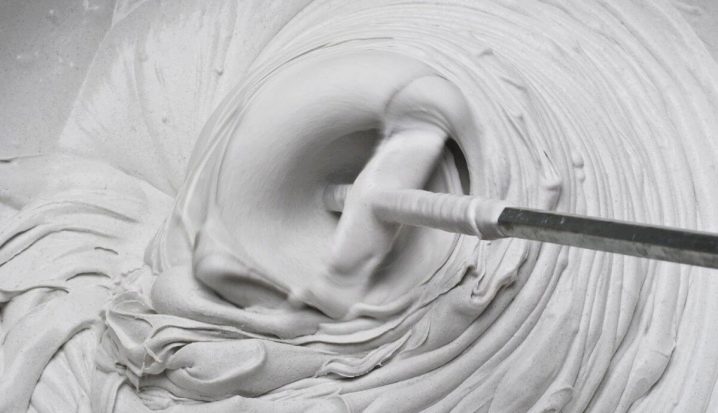
Water-dispersive
It is realized as a ready-to-use acrylic-based water-dispersion solution.
Such universal mixtures are characterized by:
- easy application on various types of surfaces (concrete, brick, wood, stone, aerated concrete);
- exhibit high adhesion (stick to the work surface);
- give a slight shrinkage in the region of 2%;
- good resistance to moisture (putties of this type are used for bathrooms, kitchens and other wet rooms);
- resistance to temperature drop.
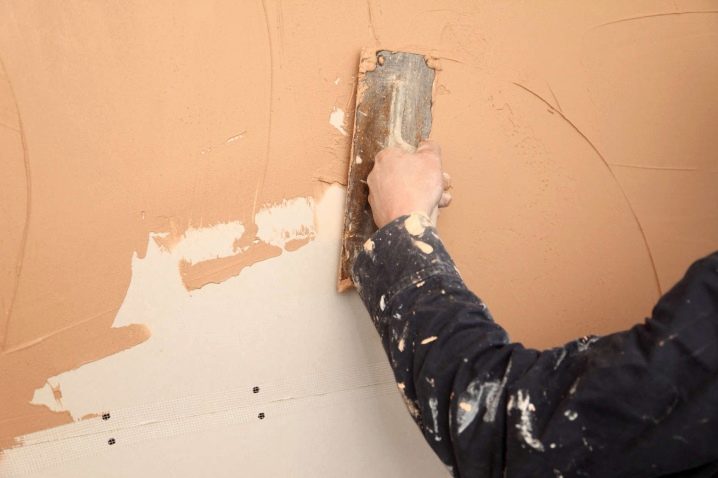
It is possible to change the finished composition by adding filler resins to obtain additional desired qualities (for example, strengthening the strength or elasticity).
Such putties:
- easy to grind;
- have a low cost;
- refractory.
The thickened solution can be diluted with a small amount of water. The advantage is the absence of a pungent building smell.
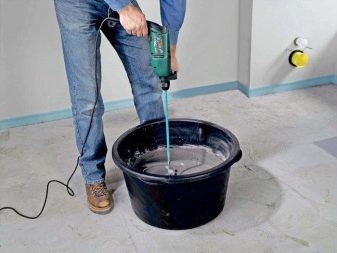
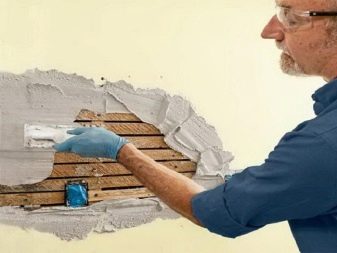
Polymer
Universal mixtures of this type are made on the basis of acrylic and latex. It is a relatively new type of putty sold as dry mixes and ready-to-use diluted solutions, popular with beginners due to its ease of handling. Such varieties exhibit many positive qualities, which are offset by their high cost.
These qualities include:
- the ability to level out significant flaws in the wall;
- excellent flat and smooth resulting surface;
- soundproofing of walls.
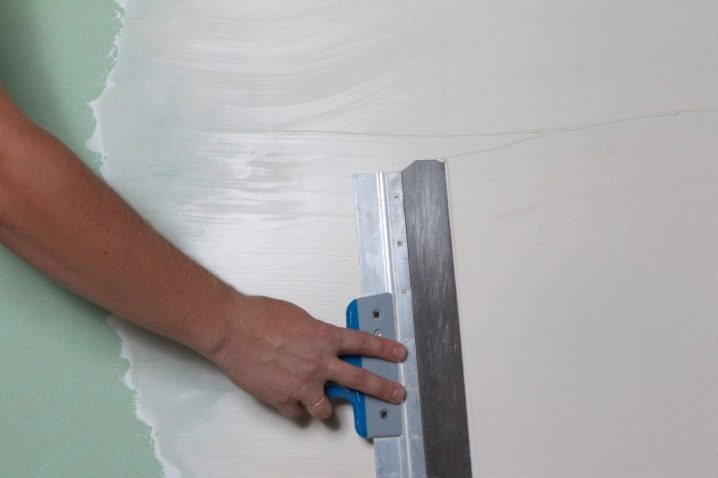
The finished surface is well suited for decorative finishes. Due to the high vapor permeability, the room does not damp. Good moisture resistance makes this putty suitable for use in bathrooms, kitchens and other damp areas. Biologically inert composition prevents the growth of mold and the growth of fungi (optimal choice for the bathroom).
This material does not have a characteristic building smell. The acrylic compound can be used for indoor and outdoor use. This putty is characterized by high resistance to aggressive weather conditions (rain, snow, heat), it is highly resistant to mechanical stress. Due to its low frost resistance, the latex composition is used only for internal work. Such material does not shrink, it is plastic, strong and durable.
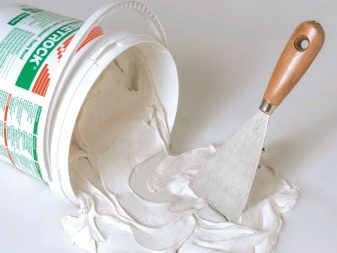
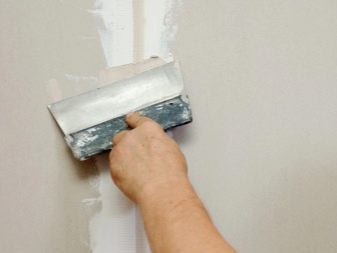
Oil and glue
This type of finishing materials uses drying oil as a binder. Consists of natural chalk, carboxymethyl cellulose glue, various plasticizers and driers.
The features of such mixtures are:
- ease of application on various types of surfaces (brick, concrete, wood, plasterboard, plastered);
- taking into account certain temperature conditions (the temperature should be at least 10 degrees with air humidity not higher than 65-70 percent);
- high adhesion (property to stick to the surface material at the molecular level);
- short drying time of the applied layer (3 - 4 hours), which significantly reduces the total amount of time spent on finishing (the last layer must dry for a day);
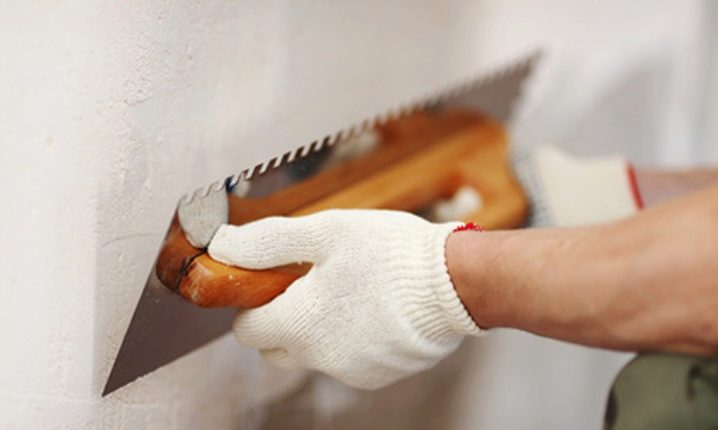
This material is an excellent base for painting with enamels, oil and water-dispersion paints. Good ductility ensures no cracks. This putty lends itself to sanding and is durable. The natural components of the composition do not provoke allergic reactions. Financially, the material is the most affordable among all types of putty.
This raw material also has disadvantages:
- low strength makes it unstable to mechanical stress and vibration;
- this putty is distinguished by low moisture resistance (it is advisable to use it only in dry rooms);
- the composition quickly hardens, in connection with which it is worth paying special attention to the expiration date upon purchase and calculate the time until final use.
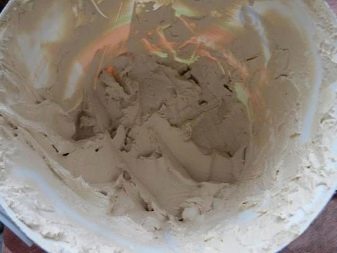
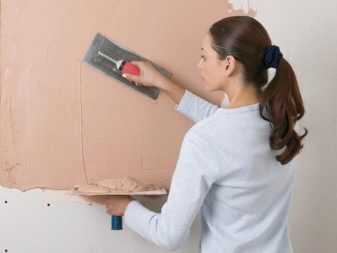
Such material must be kept at a constant temperature. At low storage temperatures, one-time freezing is allowed, when repeated, the mixture becomes unsuitable for finishing work.
Universal putty brands
- Kreizel 662 - a product of a German manufacturer, a composition based on cement and lime. Additional additives increase resistance to mechanical stress and vibration. The mixture is not limited in terms of moisture level. The technical process determines the applied layer of at least 3 mm to ensure the absence of cracks. The price of a universal mixture is around 350 rubles per 25 kg bag.
- Knauf Multi-finish - a gypsum mixture with a German-made mineral filler. Polymeric modifiers are present, it is especially plastic, dries quickly, and is easy to sand. When processed, it gives a surface according to the Q4 standard. Excellent aesthetic appearance, used for decorative finishes. The price of such a mixture is approximately 370 rubles per 25 kg.
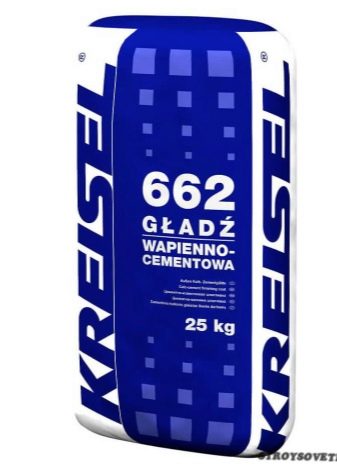
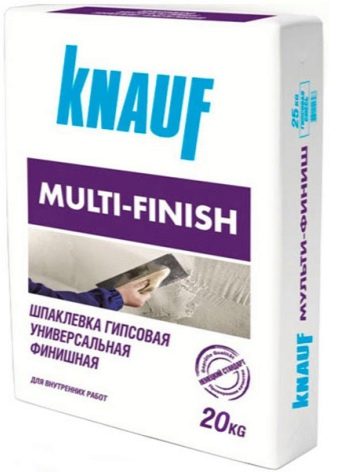
- Holzer Feinspachtel - ready-made universal polymeric putty. It is distinguished by high vapor permeability, average moisture resistance. It is easy to sand and can be applied in a layer up to 3 mm on various types of surfaces. Can be used to create embossed decorative coatings. Price for 28 kg. a bucket ranges from 960 to 1100 rubles.
- Among the well-known manufacturers, one can also note Novol Uni, Axton and VGT... The products of the brands are especially popular with the masters.
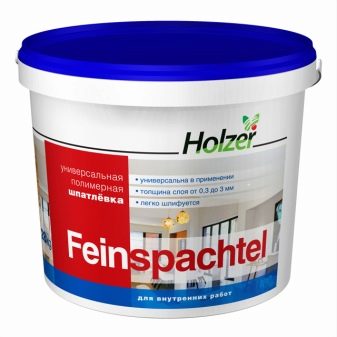
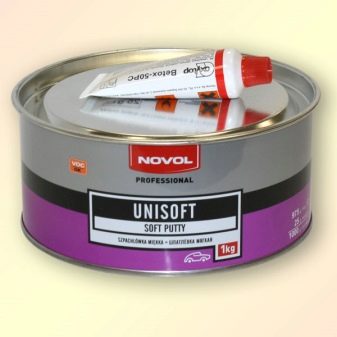
For information on how to putty the walls under the wallpaper, see the next video.













The comment was sent successfully.